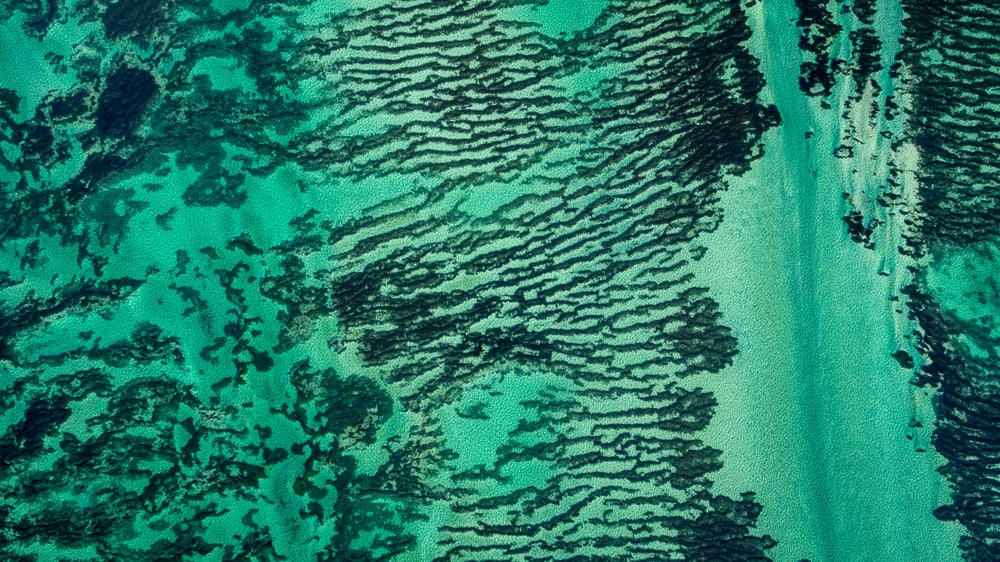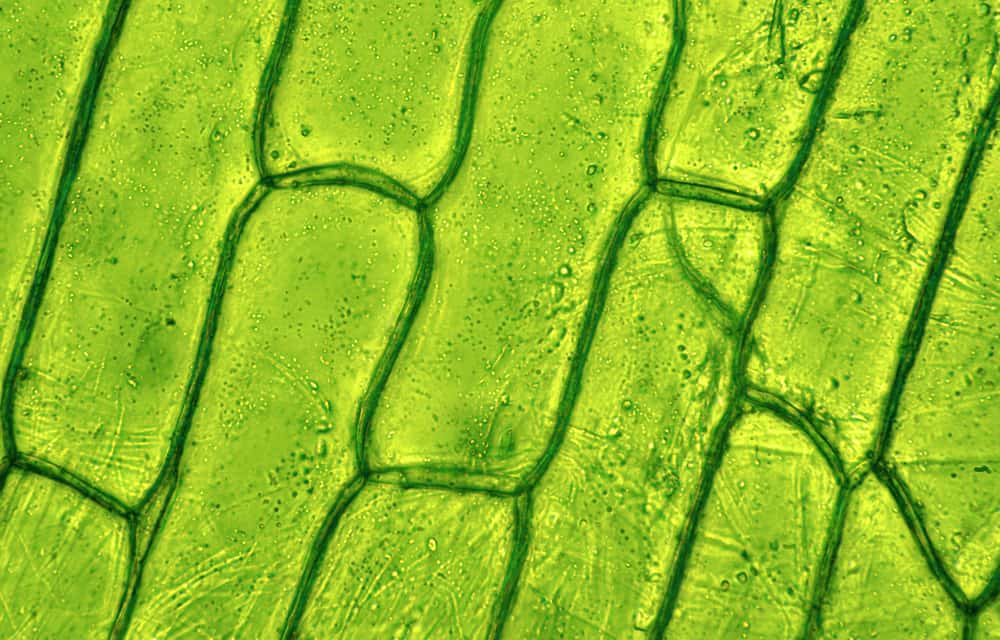What’s the World’s Biggest Plant? A few months ago, your answer would have been quaking Aspen trees in Utah. However, the large plant covering 43 hectares is no longer the largest. The spot at the top of the list of largest plants in the world now belongs to the Posidonia australis, the seagrass meadow plant located off the Australian coast in an area known as Shark Bay.
The Shark Bay ribbon weed (also known as fiber-ball weed), which has continued to grow for over 4,500 years by repeatedly cloning itself, covers over 20,000 hectares (49,000 acres). That’s over 200 square kilometers, approximately 20,000 rugby fields, or about three times the size of Manhattan island.
How Was The World’s Biggest Plant Discovered?

The world’s biggest plant is the
Posidonia australisor seagrass meadow plant, of the World Heritage Listed Shark Bay Conservation Area in Australia.
©Philip Schubert/Shutterstock.com
Scientists have always known of the existence of the Posidonia australis. It has been a notable fixture of the southern coastlines of Australia for decades. However, no one examined it closely enough to discover that it was a single plant until recently.
A group of scientists from the University of Western Australia studying the genetic composition of the meadows across the bay made a puzzling accidental discovery. It was shocking to find out that multiple samples of the plant taken from sites located up to 18 km apart on the bay had the same genetic composition. Further studies confirmed their suspicion, leading them to conclude that the meadow they were examining was a single plant and not a group of plants as they had initially thought.
The group of scientists who made the discovery were carrying out a study that was meant to look for variations in the seaweed plant species to select specimens for a restoration project. Interestingly, their findings show that the entire bay was a single plant with rhizomes spreading all over the bay.
The entire 200 sq km of ribbon weed meadows on the coast grew from a single colonizing seedling thousands of years ago. The now-massive meadow serves as a rich habitat for a wide array of marine organisms, including turtles, crabs, fishes, dugongs and dolphins.
How Old Is The World’s Biggest Plant?

Genetic studies are ongoing on Poseidon’s ribbon weed.
©fotohunter/Shutterstock.com
Poseidon’s ribbon weed spawned from a single seed about 4,500 years ago. The seed was a product of two seagrass species. It has been in the Shark Bay area for years, a spot that allowed it to grow undisturbed by human activities.
The ribbon weed has been growing by as much as 35 cm per year by spreading its rhizomes all over the bay. Scientists used the sea weed’s growth rate to estimate its age, coming up with the 4,500 years estimate.
Genetic studies are still ongoing on the plant; scientists currently have more than 116 samples taken from different parts of the giant plant for genetic sampling. However, current genetic studies carried out on this and other seagrass species estimate that the plant could live for another 2,000 years, or as much as 100,000 years at the current age.
A lot of factors have contributed to the plant’s long lifespan. The chief of them is the versatile growth pattern that it exhibits. The ribbon weed grows towards the most nutrient-rich patches in the area it occupies. This allows it to access the nutrients it requires to thrive. Scientists noticed gaps in the meadow in stressful locations where the plant was unlikely to get sufficient nutrients.
Still, it is important to note that despite the seagrass meadow’s immense size and persistence, it is not invincible. Only a decade ago, the seagrass was a lot bigger than its current size. However, cyclones and rising sea temperatures due to global warming have been adversely affecting the meadow’s growth. The overall size of the seagrass bed has been reduced by up to 7 square miles.
How Did It Evolve?

Poseidon’s ribbon weed is a polyploid plant that inherited the full genetic sequence of each parent.
©Barbol/Shutterstock.com
If you’re like most people, you’re probably wondering what makes this seagrass plant so unique and how it evolved to be so big. Scientists think that this plant is so special because it has twice as many chromosomes as other seaweed. This type of plant is a “polyploid.” The seagrass seedling from which Poseidon’s ribbon weed developed did not inherit half the genome of one parent like other seagrass seedlings. Instead, it bears the full genetic signature of each of its parents.
There are countless other examples of polyploid plant species, including bananas, potatoes and canola. Plants like this have a unique ability to thrive in extreme environments and reproduce rapidly.
Although Polyploid plants are often sterile, they make up for this with their ability to continue growing indefinitely if no one disturbs them. This explains how this particular seaweed has been able to thrive and grow indefinitely in size.
How Does The Plant Survive?
You won’t be wrong to call Poseidon’s ribbon weed a freak of nature. Despite not flowering or producing any seeds, this giant plant has become quite huge. Also, it thrives in an environment that is harsh for many marine plants. The area of the Western Australian coast where it grows experiences a temperature range of between 17 to 30 degrees Celsius. This is about 62 to 86 degrees Fahrenheit – in some years. The salinity in some parts of the bay may also be double what you’ll get in some other areas.
Despite the variableness of these conditions, the plant is able to thrive due to some somatic mutations that it has developed and passed on to its offspring over the years, which has allowed it to persist across the area it occupies.
The mutation allows the plant to develop dense meadows (up to 1 m) in areas that are considered favorable, while it spreads thin (as low as 10 cm long) in places where the conditions are harsh. The fact that the sea plant gained its chromosomes from both parents makes this kind of genetic diversity possible.
Conclusion
The next time you are snorkeling or diving off the West Australian coast, know that the wondrously long, green ribbons waving at you in the water are part of a single marine plant that has lived and thrived on that bay for thousands of years. There are so many questions yet to be answered about the origin of the world’s biggest plant and how it is still alive despite living for so long. Research is still ongoing into the unique attributes of this wonder plant. Scientists are working to unravel this complex puzzle of nature. Hopefully, we’ll have more answers as research continues.
Up Next
Wildlife in Australia – a complete list of animals in Australia
Pacific Ocean– Learn all about the deepest and largest ocean in the world.
World’s Oldest Sea Turtle – Sea turtles live for a long time. Learn all about the oldest one on record, which is over 100 years.
The photo featured at the top of this post is © Philip Schubert/Shutterstock.com
Thank you for reading! Have some feedback for us? Contact the AZ Animals editorial team.






